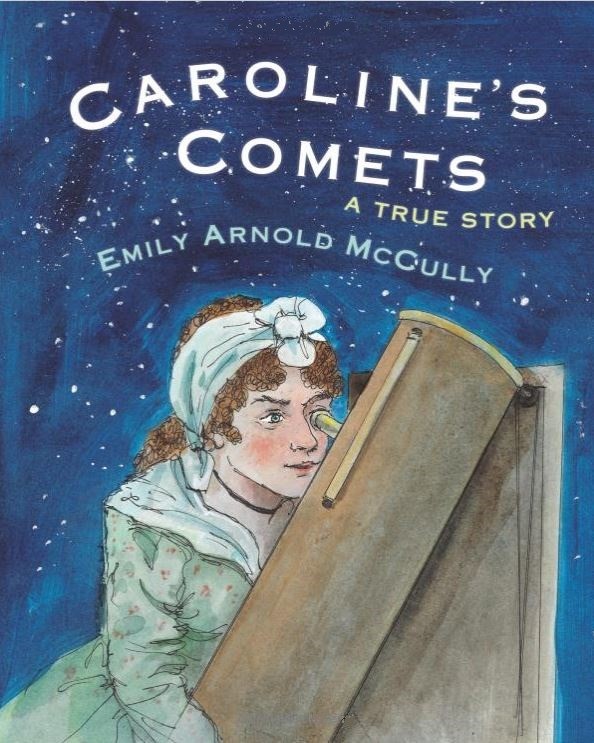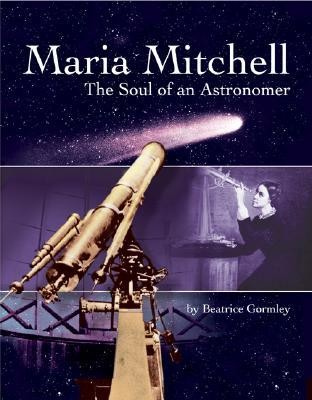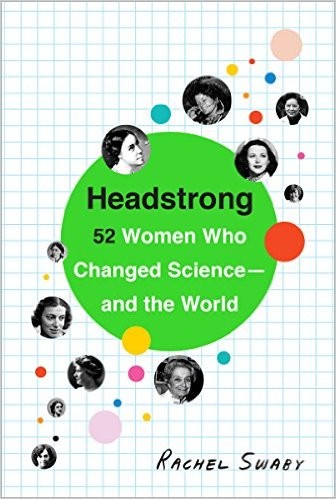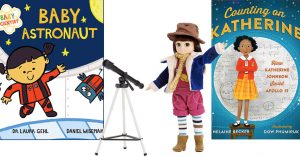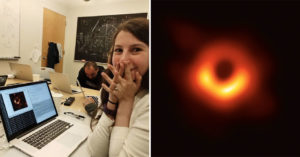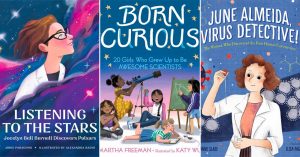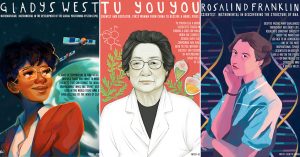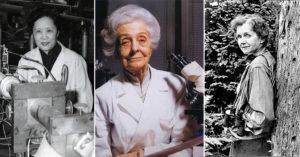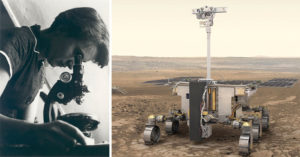Maria Mitchell became famous worldwide after becoming the first American to discover a comet.
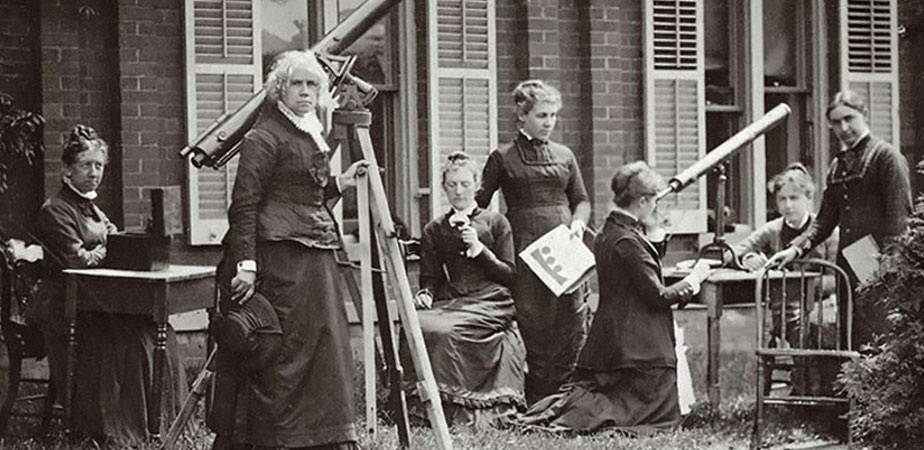 Maria Mitchell (second from left) and her students at the Vassar College Observatory measuring the Sun’s rotation from the movement of sunspots.
Maria Mitchell (second from left) and her students at the Vassar College Observatory measuring the Sun’s rotation from the movement of sunspots.At the Seneca Falls Convention in 1848, the world's first women's rights convention, illustrious suffragists and feminists like Lucretia Mott and Elizabeth Cady Stanton took time to honor a groundbreaking scientist: Maria Mitchell, who had just become the first American and third woman in history to discover a comet! Mitchell would go on to become America's first professional female astronomer, and she used her newfound fame to advocate for scientific education for girls and women. "Does anyone suppose that any woman in all the ages has had a fair chance to show what she could do in science?" she asked. "Until able women have given their lives to investigation, it is idle to discuss the question of their capacity for original work." Or, as she wrote more pointedly in one of her journals, "better to be peering in the spectrograph than on the pattern of a dress."
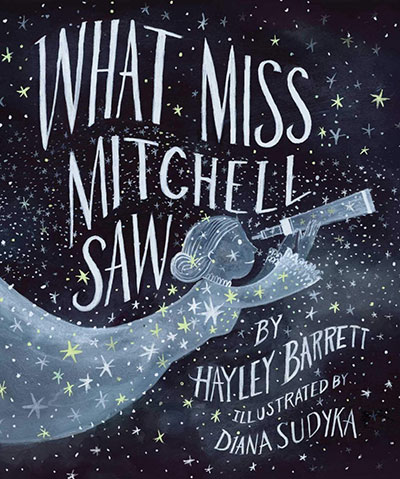 Born in Nantucket, Massachusetts on August 1, 1818, Mitchell was raised by Quaker parents who believed, contrary to the practice of the time, in giving girls the same quality of education as boys. Her father, a school principal and hobby astronomer, encouraged her interest in science and astronomy. At age 12, she helped him calculate the exact timing of a solar eclipse, and by age 14, sailors trusted her to perform the astronomical calculations that helped them set their courses for long whaling journeys. Mitchell completed her education at age 16, and opened a school to train girls in science and math. A year later, she was offered a position at the Nantucket Atheneum and became the town's first librarian.
Born in Nantucket, Massachusetts on August 1, 1818, Mitchell was raised by Quaker parents who believed, contrary to the practice of the time, in giving girls the same quality of education as boys. Her father, a school principal and hobby astronomer, encouraged her interest in science and astronomy. At age 12, she helped him calculate the exact timing of a solar eclipse, and by age 14, sailors trusted her to perform the astronomical calculations that helped them set their courses for long whaling journeys. Mitchell completed her education at age 16, and opened a school to train girls in science and math. A year later, she was offered a position at the Nantucket Atheneum and became the town's first librarian.
During the twenty years she worked at the library, Mitchell continued her astronomical work at night. In the evenings, she and her father would climb to the roof of the Pacific Bank to get a good viewpoint for their astronomical observations. They would sweep the skies with a Dollond refracting telescope with three inches of aperture and a 46 inch focal length. Then on October 1, 1847, Mitchell spotted something no one had seen before. Comet 1847 VI (now called C/1847 T1) was a small, blurry streak in her lens, invisible to the naked eye and therefore uncharted by astronomers.
When she told her father, he was so excited that he wanted to declare the discovery at once; the cautious Mitchell wanted to chart her discovery for several days first. In January 1848, she published a notice of her discovery in Silliman's Journal under her father's name; a month later, she published her calculations of its orbit under her own. After the comet was officially recognized on February 11, 1848, it became widely known as "Miss Mitchell's Comet."
Mitchell was only the third woman in history, and the first American of either sex to discover a new comet, so the story quickly spread. King Frederick VI of Denmark had created a prize for the first discoverer of new comets: once her claim for C/1847 T1 was confirmed, Mitchell received a gold medal inscribed with the words Non Frustra Signorum Obitus Speculamur et Ortus — "Not in vain do we watch the setting and rising [of the stars]" — and international acclaim. Her discovery highlighted the capabilities of not just female scientists, but also American ones: prior to her fame, most European astronomers looked down at their American counterparts as being inferior scientists. Later that year, Mitchell became the first woman elected to the American Academy of Arts and Sciences. After one scientific meeting, she wrote, "It is really amusing to find one's self lionized in a city where one has visited quietly for years; to see the doors of fashionable mansions open wide to receive you, which never opened before."
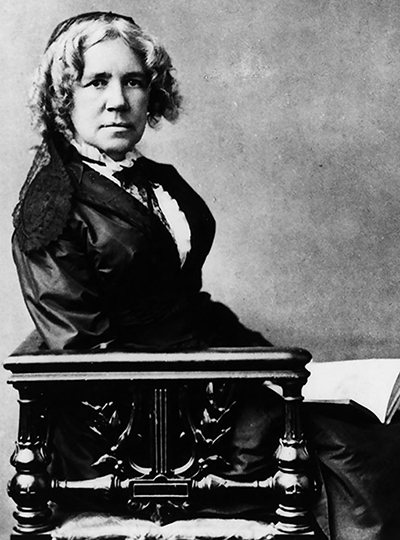 In 1856, Mitchell left the Atheneum and traveled to Europe, touring some of the world's largest observatories and meeting many prominent astronomers. In 1865, she achieved another first when she became the first professor of astronomy at Vassar College, which was at the time an all-women's school. She was also named director of the new Vassar College Observatory. During her 23-year tenure, the college enrolled more students in mathematics and astronomy than the prominent astronomy program at Harvard University.
In 1856, Mitchell left the Atheneum and traveled to Europe, touring some of the world's largest observatories and meeting many prominent astronomers. In 1865, she achieved another first when she became the first professor of astronomy at Vassar College, which was at the time an all-women's school. She was also named director of the new Vassar College Observatory. During her 23-year tenure, the college enrolled more students in mathematics and astronomy than the prominent astronomy program at Harvard University.
At Vassar, Mitchell was famous for her rigorous instruction and her high expectations of her students, despite the unlikelihood that many would go on to careers in science due to the few opportunities available to women. "I cannot expect to make astronomers," she told them, "but I do expect that you will invigorate your minds by the effort at healthy modes of thinking." She defied convention by having her students go out at night to take observations, and had noted feminists, including Julia Ward Howe, come to her classes to speak. Mitchell was a staunch advocate of expanding educational opportunities for women and encouraging their self-reliance. "Until women throw off reverence for authority they will not develop," she once wrote. "When they do this, when they come to truth through their own investigations, when doubts lead them to discovery, the truth they get will be theirs, and their minds will go on unfettered."
Mitchell was also active in the Women's Suffrage Movement; she was one of the co-founders of the Association for the Advancement of Women in 1873, and served as its president in both 1874 and 1875. Despite her prestige, Mitchell was far from immune from the sexism of the day and was outspoken in opposing it. After she learned that she and the only other female professor, Dr. Alida Avery, were paid less than the younger male professors at Vassar, Mitchell protested the disparity, eventually winning a salary increase that brought her earnings to parity with her male counterparts. "[We were] fighting for all women," she later said, "for it was more the general than the special injustice that reached us."
Mitchell taught at Vassar until 1888, and died the following year after she retired to Lynn, Massachusetts. The Maria Mitchell Association in Nantucket, named in her honor and dedicated to preserving scientific research on the island, operates a natural history museum, an aquarium, a science library, and the Maria Mitchell Observatory. She was inducted into the National Women's Hall of Fame in 1989. Her bold words about the importance of women in science still inspire today: "The eye that directs a needle in the delicate meshes of embroidery will equally well bisect a star with the spider web of the micrometer.... No woman should say, 'I am but a woman!'" she declared. "But a woman! What more can you ask to be?"
Books About Pioneering Women Astronomers
The Astronomer Who Questioned Everything: The Story of Maria Mitchell
The Astronomer Who Questioned Everything: The Story of Maria Mitchell
As a child, Maria Mitchell wondered how boats found their way across the sea when they left her island of Nantucket. Her father showed her how they read the stars: by understanding them, you could always find the way you needed to go. She grew up learning how to use a telescope and other astronomers' tools, but at the time, few people thought a woman could study the stars. Then she learned that there was a prize for the first person to find a new comet... and she was sure she could win it. Not only did she win that prize, but Mitchell would go on to become the first professional female astronomer in America — and one of the first female college professors. With gorgeous artwork and intriguing text, plus back matter all about Mitchell's life and achievements, this is a beautiful introduction to a woman who used the stars to find her way.
Look Up!: Henrietta Leavitt, Pioneering Woman Astronomer
Look Up!: Henrietta Leavitt, Pioneering Woman Astronomer
When Henrietta Swan Leavitt was hired by the Harvard College Observatory, it wasn't to observe the skies herself: instead, she was hired as a human "computer," and set to studying photographic plates that male colleagues had taken at the telescope. She spent years measuring star positions and sizes and, over time, discovered that certain stars had a fixed pattern to their changes — a discovery that allowed astronomers to understand the true size of the universe and brought Leavitt recognition as a pioneer of astronomical science. Award-winning artist Raul Colon's illustrations particularly shine in this appealing picture book biography.
Maria's Comet
Maria's Comet
Young Maria Mitchell dreams of being an astronomer, inspired by watching her father explore the skies with his telescope. When he finally gives her permission to look too, she sees the wonders of the night sky, and decides "I will be an explorer, but I want to sail the sea of stars." This poetic picture book focuses on Mitchell's childhood, but captures the sense of curiosity that later drove her to become America's first professional woman astronomer — and the vibrant illustrations, complete with cobalt blue night skies holding real constellations, will inspire girls to take their own peek through a telescope.
Caroline's Comets: A True Story
Caroline's Comets: A True Story
Caroline Herschel was born to a family where girls weren't expected to amount to much — especially once she ended up scarred by smallpox and stunted by typhus. Her family used her as a scullery maid, but her brother William saw her promise, so when he left for England, he took her with him. Together, the astronomy-loving brother and sister built the greatest telescope of their age, which Caroline used to discover fourteen nebulae and two galaxies. She even became the first woman to discover a comet — and the first woman officially employed as a scientist. This picture book biography of the groundbreaking astronomer will inspire kids with her spirit of curiosity and resilience.
What Miss Mitchell Saw
What Miss Mitchell Saw
From the time she was very young, Maria Mitchell loved looking at the stars. With the encouragement of her father — even though she found her schooling difficult — she studied astronomy, and devoted her nights to sweeping the sky with her telescope. And then, one day, she saw something new: a comet! "Miss Mitchell's Comet" won this trailblazing astronomer international fame that led to her becoming America's first female professional astronomer. Lyrical text and luminous illustrations celebrate a star-gazing scientist who helped set the stage for generations of women after her.
Annie Jump Cannon, Astronomer
Annie Jump Cannon, Astronomer
When Annie Jump Cannon first began working at the Harvard Observatory, it wasn't to look though the telescope — women weren't allowed to use it. Instead, she was hired as a "computer," analyzing and studying the data that men found when using the telescope. Cannon was assigned a challenging task: figuring out how to classify the many stars that newer telescopes and better cameras were able to spot. Cannon's classification is still in use — and she set a record for the number of stars identified and classified that stands to this day! This picture book celebrates Cannon's love of the stars and decades of hard work. For two picture books about other women astronomers, check out Look Up! Henrietta Leavitt, Pioneering Woman Astronomer and Caroline's Comets.
Her Eyes on the Stars: Maria Mitchell, Astronomer
Her Eyes on the Stars: Maria Mitchell, Astronomer
Maria Mitchell was disappointed to miss an annular solar eclipse when she was 12 years old. Determined not to miss anything else, she took to sweeping the skies with a telescope... and discovered a comet! She won an award from the King of Denmark for her discovery and became known as "the lady astronomer." That fame allowed her to become a professional astronomer — unheard of for women of her day — as well as the first woman astronomy professor in the world. And as she trained a new generation of women to study the stars, she saw something far more exciting than the ring of the solar eclipse she missed: "another powerful ring — a ring of women." Best-selling author Laurie Wallmark introduces young readers to a trailblazer for women in science who never gave up reaching for the stars.
Women in Science
50 Fearless Pioneers Who Changed the World
Women in Science
50 Fearless Pioneers Who Changed the World
This charmingly illustrated and educational book highlights the contributions of fifty notable women to the fields of science, technology, engineering, and mathematics from the ancient to the modern world. Full of striking, singular art, this fascinating collection profiles well-known figures like primatologist Jane Goodall, as well as lesser-known pioneers such as Katherine Johnson, the African-American physicist and mathematician who calculated the trajectory of the 1969 Apollo 11 mission to the moon. Women in Science celebrates the achievements of the intrepid women who have paved the way for the next generation of female engineers, biologists, mathematicians, doctors, astronauts, physicists, and more!
Maria Mitchell: The Soul of an Astronomer
Maria Mitchell: The Soul of an Astronomer
In the mid-1800s, a young woman with a passion for the stars became America's first female professional astronomer. Despite many obstacles to her education and practice, Maria Mitchell would become famous for discovering a comet by telescope in 1847, for which she became the first woman and first American to receive one of King Frederick VI of Denmark's gold medals. Rather than writing a simple chronological biography, author Beatrice Gormley opts to set the stage by talking about 19th century Nantucket, Mitchell's home, and her life and career as an adult, and incorporated multiple pages of photos, so that tween and teen readers can more easily understand just how unique Mitchell's remarkable life was.
Finding Wonders: Three Girls Who Changed Science
Finding Wonders: Three Girls Who Changed Science
This gorgeously written novel in verse celebrates three girls in three different time periods who grew up to become groundbreaking scientists. Maria Merian was sure that caterpillars were not wicked things born from mud, as most people of her time believed. More than a century later, Mary Anning helped her father collect stone sea creatures from the cliffs in southwest England. Intrepid and patient, she eventually discovered fossils that would change people’s vision of the past. Across the ocean, Maria Mitchell longed to discover a new comet and after years of studying the night sky, she finally did. Told in vibrant, evocative poems, this stunning novel celebrates the joy of discovery and finding wonder in the world around us.
Headstrong: 52 Women Who Changed Science – And The World
Headstrong: 52 Women Who Changed Science – And The World
Learn the often neglected stories of women in science with these 52 engaging capsule biographies! Spanning centuries of courageous thinkers, author Rachel Swaby celebrates women whose specializations range from biology to physics to engineering to programming, from famous names like Sally Ride and Ada Lovelace to lesser-known women like Stephanie Kwolek and Chien-Shiung Wu. While each individual's biography runs for only a few pages, Swaby has done an impressive job of conveying the essence of each scientist's life and work into the profiles, while her light tone urges readers to learn more about each of these groundbreaking women.
The Glass Universe: How the Ladies of the Harvard Observatory Took the Measure of the Stars
The Glass Universe: How the Ladies of the Harvard Observatory Took the Measure of the Stars
If you were a woman at the Harvard Observatory in the mid-nineteenth century, you weren't an astronomer, because only men could use the telescope: you were a "human computer." But as photography began transforming astronomy, these women would revolutionize our understanding of the universe. "The glass universe" included over half a million photographic plates, and the women who studied them — including Williamina Fleming, Annie Jump Cannon, and Dr. Cecilia Helena Payne — would discover novae, design stellar classification systems, and determine what stars were made of. This fascinating story of the hidden history of astronomy celebrates the women whose contributions made our current understanding of the stars and the space they inhabit possible.
Maria Mitchell and the Sexing of Science
Maria Mitchell and the Sexing of Science
Maria Mitchell's story isn't just one of scientific discovery: it's also the story of the cultural shift that drove women further out of the sciences. Before the Civil War, math and sciences were unusual, but acceptable studies for women; men dominated the humanities, where they would have both profit and political influence. In Renée Bergland's intriguing biography, she shows how Mitchell's career blossomed in this environment — and how, during her time as a professor at Vassar College, opportunities for her female students disappeared. It's a unique look at both the shift in the culture of science and at the woman who vainly fought against the change.
Night Sky Star Wheel
Night Sky Star Wheel
This easy-to-use star wheel will help you figure out what stars you can see at any time of night or year! At 8" in diameter, this planisphere makes it easy for stargazers to identify which constellations and major stars are above the horizon. This version is for 30 to 40 degrees of latitude, covering the southern half of the US, North Africa, and the Middle East; stargazers in the northern US and Europe can check out the 40 - 50 degree latitude star wheel, while other versions cover other latitudes.












